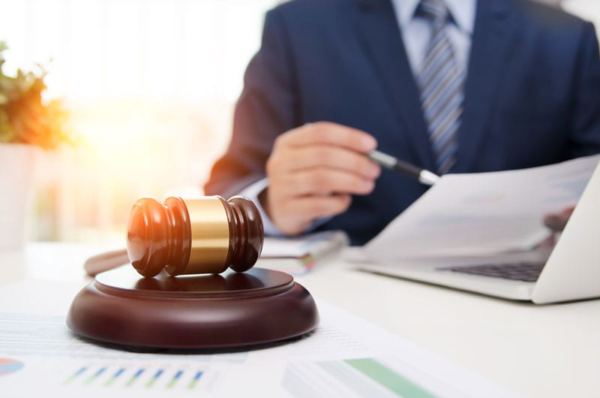Before the Higher Education Act of 1976, bankruptcy debtors could eliminate their student loans as easily as any other dischargeable debt.
Prior to the 2005 changes to the Bankruptcy Code, student loans were dischargeable five years after repayment began. Since 2005, it has become nearly impossible to discharge student loans in bankruptcy, requiring debtors to meet a much more significant burden than necessary to eliminate every other type of dischargeable debt.
The intention behind protecting student loan lenders has been to keep higher education affordable. However, by making student loans non-dischargeable, Congress has encouraged a flood of money into education, which has led to the unintended consequence of disproportionally rising costs of higher education.
According to Forbes, the cost of education, adjusted for inflation, has risen 180% since 1980. The COVID-19 pandemic temporarily reversed that trend, but there is no data to suggest the cost of education has leveled.
Under current bankruptcy rules, debtors seeking to discharge student loans must file a separate lawsuit, known as an adversary proceeding, against the Department of Education (DOE) and prove that the repayment of their loans would impose an “undue hardship.”
Many bankruptcy judges have struggled to provide a “fresh start” for debtors who cannot afford to pay their student loans because the seemingly insurmountable burden imposed by Congress frequently “ties their hands.”
When a debtor sues the DOE in bankruptcy court, the lawyers at the Department of Justice (DOJ) represent the DOE. The heads of the DOE and DOJ are political appointments by the Executive Branch of government, meaning that the Biden Administration directly influences department policy.
Biden’s influence has resulted in the latest DOE/DOJ policy on defending bankruptcy lawsuits brought by debtors seeking the discharge of student loans.

The DOJ/DOE has implemented a new process to determine whether they will even defend the adversary proceedings brought by debtors seeking to discharge guaranteed student loans. If the DOJ/DOE chooses to stay silent or even support the debtor in their lawsuit, the debtor will win by default, and their student loans will be forever discharged.
According to the DOJ, “The new process will help ensure transparent and consistent expectations for the discharge of student loan debt in bankruptcy; reduce the burden on debtors of pursuing such proceedings; and make it easier for Justice Department attorneys to identify cases where discharge is appropriate.”
Unfortunately, the new policy only applies to debtors who file for bankruptcy after November 17, 2022. Debtors have not yet tested this arbitrary date, and there is some reason to believe DOE/DOJ could apply the same policy to Chapter 7 or Chapter 13 debtors who reopen their closed cases.
Also, otherwise eligible Chapter 13 debtors currently in a plan of reorganization could opt to allow their case to dismiss for non-payment and refile a new Chapter 13 (Talk to your bankruptcy lawyer before stopping plan payments!).
DOJ will assess an “Attestation Form” completed by the Debtor/Plaintiff. In consultation with DOE, DOJ will review the information provided, apply the factors that courts consider relevant to the undue-hardship inquiry, and determine whether to recommend discharge. Even where the relevant factors may not support a complete discharge, where appropriate, DOJ will consider backing a partial discharge.
There are three general areas of inquiry DOJ will consider:
Present Ability to Pay – Using existing standards developed by the IRS and the information provided by the debtor, DOJ will calculate a debtor’s expenses and compare those expenses to the debtor’s income. If a debtor’s expenses equal or exceed the debtor’s income, the Department will determine that the debtor lacks a present ability to pay.
Future Ability to Pay – DOJ will then assess whether the debtor’s present inability to pay is likely to persist in the future. DOJ will expect a debtor’s financial circumstances will not change in the future if certain factors—such as retirement age, disability or chronic injury, protracted unemployment history, lack of degree, or extended repayment status—are present. Where such factors are not present, DOJ will delve even deeper into a debtor’s particular circumstances likely to prevent their future ability to repay student loans.
Good Faith Efforts – In determining whether the debtor has made a “good faith effort” to repay their student loans, DOJ will focus on objective criteria reflecting reasonable efforts to earn income, manage expenses, and repay their loan. DOJ will consider, for example, whether the debtor contacted DOE or their loan servicer regarding payment options for their loan, such as income-driven repayment plans. DOJ will not disqualify a debtor solely based on past non-payment if other evidence of good faith exists. Additionally, a debtor will not be disqualified based on their not enrolling in an income-driven repayment plan where the debtor was deterred from participating in such a plan or if the debtor otherwise provides a reasonable explanation for non-enrollment.
Blue Bee Bankruptcy Law can perform a comprehensive analysis of a debtor’s loans and specific factual circumstances, including their present and future ability to pay, as well as their good faith efforts to repay their loans. We can provide a detailed summary, and in those cases where a debtor fails to meet the requirements, we can provide recommendations to increase the likelihood that DOJ/DOE will support the discharge of their guaranteed student loans in bankruptcy.

We will help you understand all bankruptcy laws in Utah and make sure you are following the right path.
This does not obligate the potential client to hire Blue Bee Bankruptcy Law. We also will not pressure you in any way to hire us.
Contact us online, or call us today at (801)-285-0980.